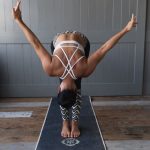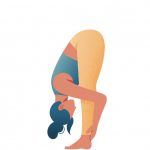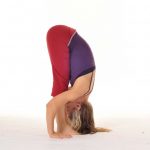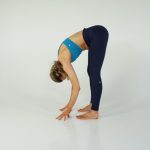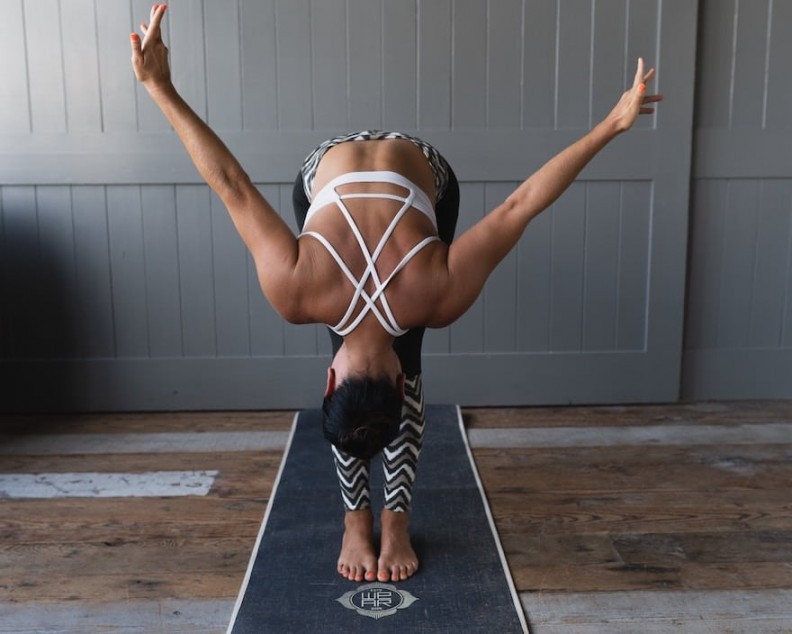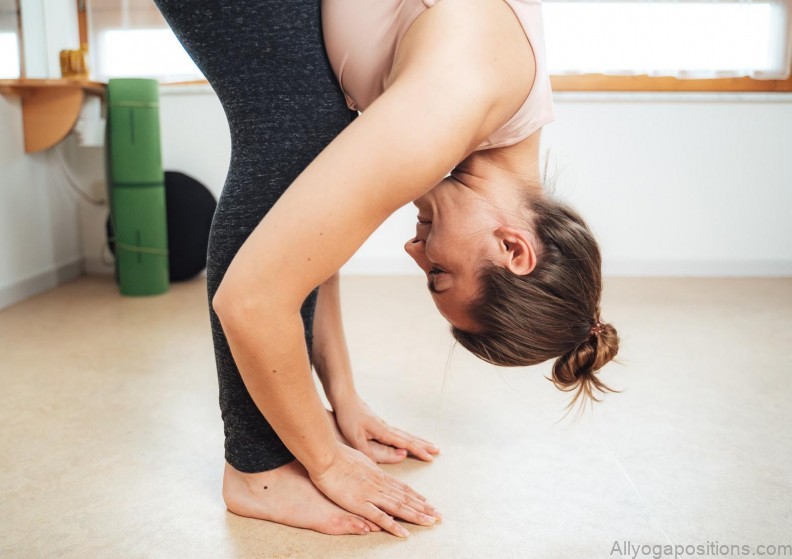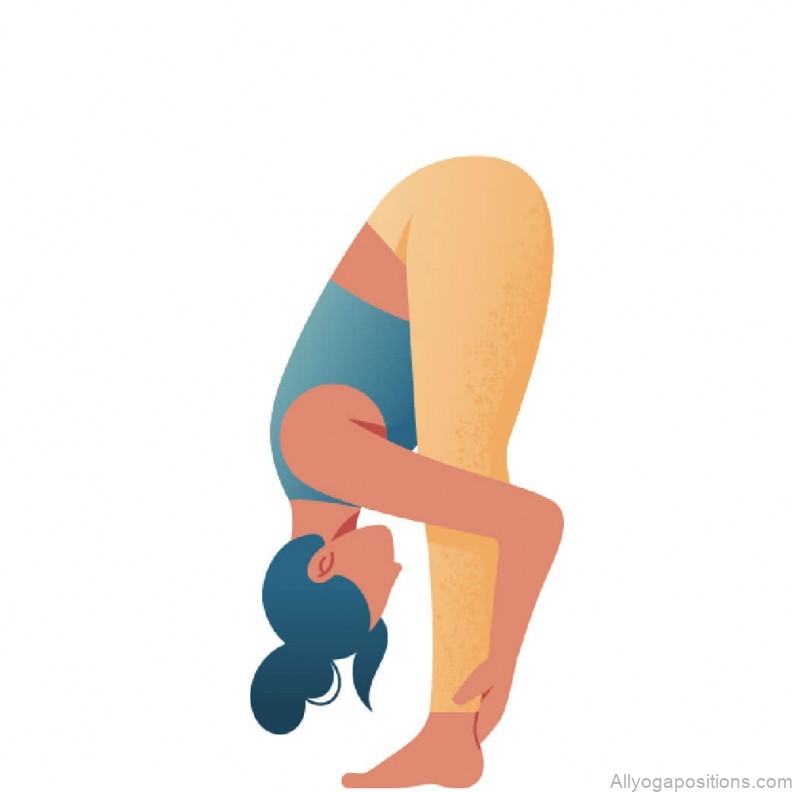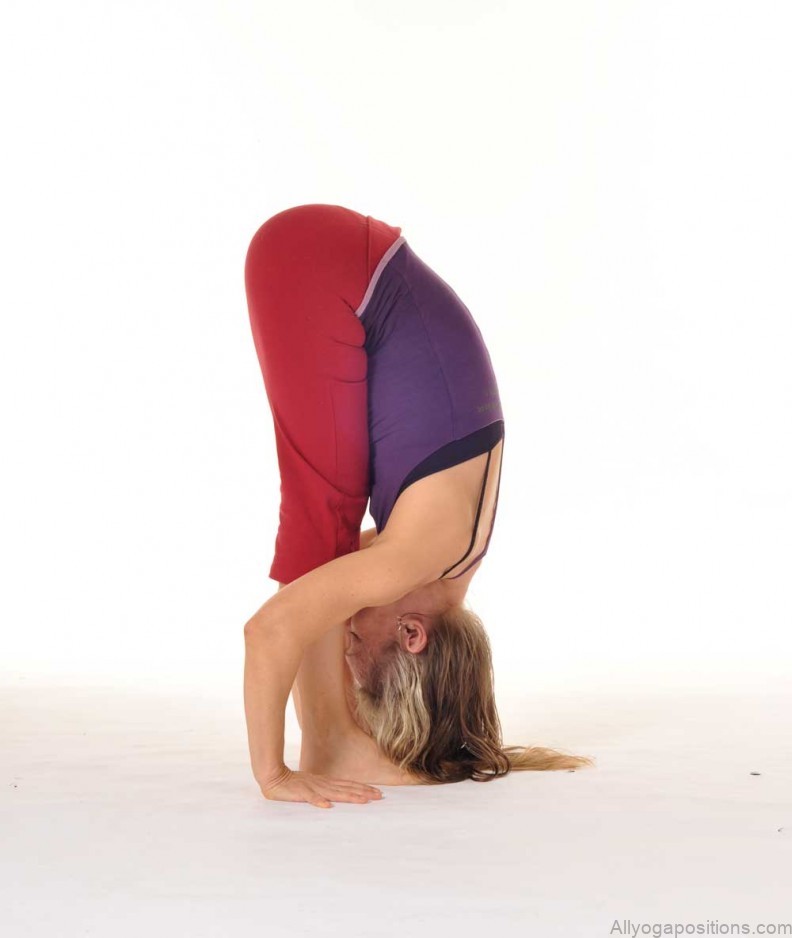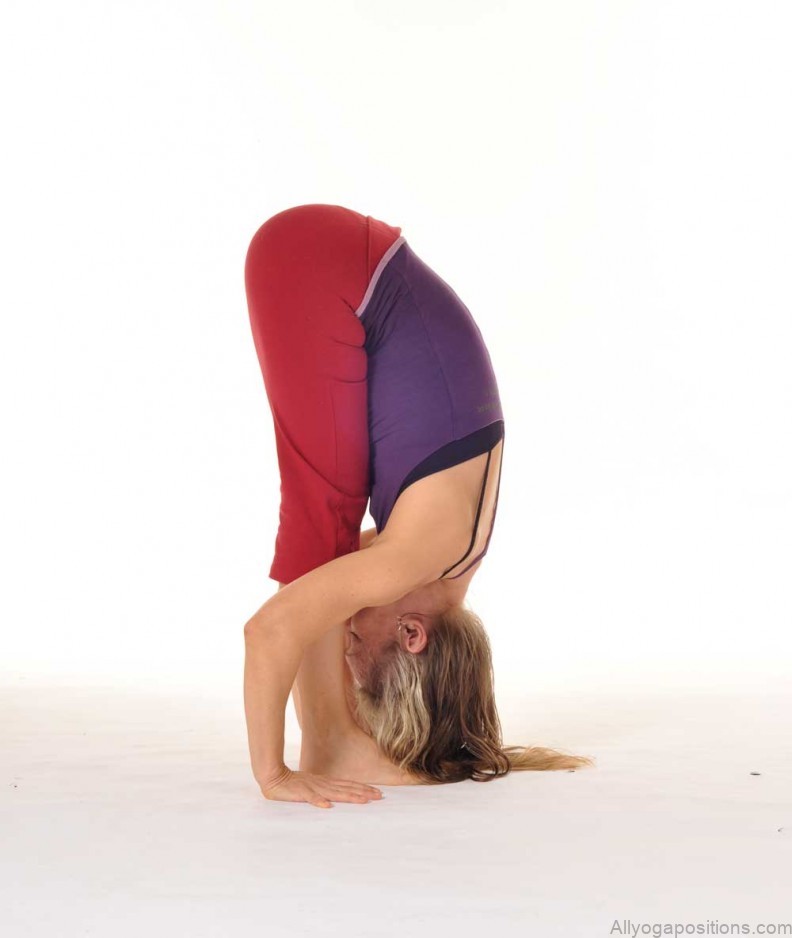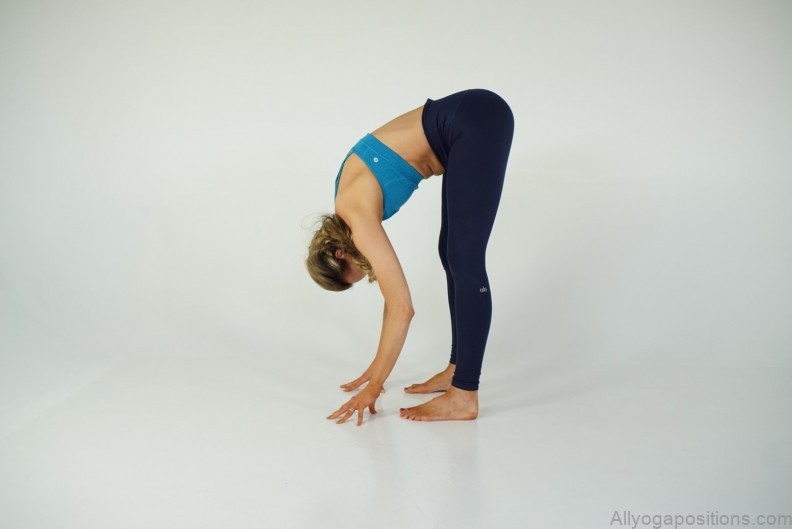1: The Origins and Meaning of Uttanasana
Uttanasana, also known as the Forward Fold, is a foundational yoga pose that traces its roots back to ancient yoga traditions. The term “Uttanasana” is derived from two Sanskrit words: “Ut” meaning intense and “Tan” meaning to stretch. Combined, Uttanasana represents the intense stretch and forward folding action of the pose.
In yoga philosophy, Uttanasana symbolizes surrender and letting go. It invites practitioners to release physical and mental tension, allowing for a deeper connection with the present moment. As you fold forward, Uttanasana encourages introspection and a sense of grounding, making it a valuable posture for both beginners and experienced yogis.
Mastering Uttanasana: Dive Deep into the Forward Fold Photo Gallery
2: Benefits of Uttanasana for the Mind and Body
Uttanasana offers numerous benefits that extend beyond the physical body. Here are some key advantages of incorporating this pose into your yoga practice:
1. Enhances Flexibility:
Uttanasana primarily targets the hamstrings, calves, and lower back, stretching and lengthening these muscle groups. Regular practice can gradually increase flexibility in the legs and spine, improving overall mobility and reducing the risk of injuries.
2. Relieves Tension and Stress:
The forward folding action in Uttanasana promotes the release of tension in the back, neck, and shoulders. As you surrender to the pose, you may experience a sense of calmness and relief from stress and anxiety. Uttanasana also stimulates blood circulation, promoting a feeling of rejuvenation.
3. Stimulates Digestion:
The gentle compression on the abdomen in Uttanasana can help stimulate digestion and relieve common digestive issues. The pose activates the parasympathetic nervous system, which is responsible for the rest-and-digest response, aiding in optimal digestion and absorption of nutrients.
4. Calms the Mind:
Uttanasana encourages introspection and helps calm the mind. The inward focus and deep breathing associated with this pose can help alleviate symptoms of mild depression and anxiety. Practicing Uttanasana regularly may lead to improved mental clarity and a heightened sense of well-being.
5. Cultivates Mind-Body Connection:
Uttanasana invites practitioners to tune in to their body, fostering a deeper mind-body connection. The pose encourages self-awareness and mindfulness, allowing individuals to observe sensations, thoughts, and emotions without judgment. This heightened awareness can extend beyond the yoga mat, enhancing overall self-care and self-understanding.
3: Step-by-Step Guide to Performing Uttanasana
Follow these step-by-step instructions to perform Uttanasana with proper alignment:
- Begin by standing tall in Tadasana (Mountain Pose), with your feet hip-width apart and your arms resting alongside your body.
- Take a deep breath in, lengthening your spine and engaging your core.
- On an exhale, slowly hinge forward from your hips, maintaining a straight spine as you fold forward.
- Allow your hands to reach toward the ground, framing your feet or resting on the floor beside them.
- If your hamstrings feel tight, you can slightly bend your knees to relieve the tension. Remember, the focus is on maintaining a straight spine rather than touching the ground. 6. As you fold forward, let your head and neck relax, releasing any tension in the upper body.
- Breathe deeply and hold the pose for 30 seconds to a minute, allowing gravity to gently deepen the stretch.
- To come out of Uttanasana, engage your core muscles and slowly rise back up, vertebra by vertebra, to return to a standing position.
Remember, it’s essential to listen to your body and respect your limits. If you have any specific health concerns or injuries, consult with a qualified yoga instructor or healthcare professional before practicing Uttanasana.
4: Variations and Modifications to Enhance Your Uttanasana Practice
Uttanasana offers a variety of variations and modifications to suit different levels of flexibility and physical abilities. Here are a few options to explore:
1. Half Uttanasana:
If you have tight hamstrings or lower back issues, you can practice Half Uttanasana. Instead of folding forward fully, bend your knees slightly and rest your hands on your thighs or shins. This modification allows you to experience the benefits of the pose while maintaining a more accessible position.
2. Uttanasana with Shoulder Opener:
To deepen the stretch in the shoulders and upper back, interlace your fingers behind your back while in Uttanasana. Slowly lift your hands toward the ceiling, allowing your arms to extend overhead. This variation provides an additional opening in the chest and shoulders, promoting better posture and releasing tension in the upper body.
3. Wide-Legged Uttanasana:
In Wide-Legged Uttanasana, start with a wide stance, with your feet positioned wider than hip-width apart. Fold forward from your hips, maintaining a straight spine. You can choose to keep your hands on the ground or grab onto your ankles for a deeper stretch. This variation focuses on stretching the inner thighs and groin, in addition to the usual benefits of Uttanasana.
4. Supported Uttanasana:
If you struggle with tight hamstrings or find it challenging to maintain balance, you can practice Supported Uttanasana. Place a block or bolster beneath your hands, allowing them to rest at a higher level. This modification reduces the intensity of the stretch, making it more accessible and comfortable for beginners or individuals with limited flexibility.
5. One-Legged Uttanasana:
For an additional challenge and focus on balance, try One-Legged Uttanasana. Start in the traditional Uttanasana position and then lift one leg straight back behind you, maintaining a parallel position with the ground. Engage your core and keep your hips level. This variation not only stretches the hamstrings but also strengthens the standing leg and enhances stability.
Experiment with these variations and modifications to find the ones that work best for your body. Always practice with mindfulness, ensuring that you maintain proper alignment and avoid any pain or discomfort.
5: Precautions and Contraindications for Uttanasana
While Uttanasana is generally safe for most people, there are a few precautions and contraindications to consider:
1. Back Injuries:
If you have a recent or chronic back injury, it’s important to approach Uttanasana with caution. Bend your knees as needed and avoid rounding your back excessively. Consult with a healthcare professional or a qualified yoga instructor for guidance on modifications or alternative poses that can support your recovery.
2. High Blood Pressure:
Individuals with high blood pressure should practice Uttanasana with care. The forward fold may increase blood pressure in the head and should be avoided or performed under the guidance of a knowledgeable yoga instructor. It is advisable to keep the head above the heart by using blocks or modifying the pose to a gentler forward fold.
3. Pregnancy:
During pregnancy, it is important to modify certain yoga poses to accommodate the changing body. In the case of Uttanasana, it is recommended to practice with bent knees and avoid deep forward folds that compress the abdomen. Always consult with your healthcare provider and seek guidance from a prenatal yoga instructor for safe modifications.
4. Herniated Disc or Sciatica:
Individuals with a herniated disc or sciatica should approach Uttanasana with caution. Excessive forward folding can aggravate these conditions. It is recommended to practice under the guidance of a knowledgeable yoga instructor who can provide modifications or alternative poses that support spinal health.
5. Osteoporosis or Osteopenia:
If you have osteoporosis or osteopenia, it is crucial to avoid excessive forward bending that can strain the spine and increase the risk of fractures. Modify Uttanasana by keeping a gentle bend in the knees and focusing on the lengthening of the spine rather than folding deeply forward. Seek guidance from a healthcare professional or qualified yoga instructor to ensure safe practice.
Always listen to your body and honor its limitations. If you experience any pain, discomfort, or dizziness during Uttanasana or any other yoga pose, ease out of it and consult with a healthcare professional or a qualified yoga instructor.
Incorporating Uttanasana into your yoga practice can bring about a multitude of benefits for both the body and mind. By exploring its origins, understanding its benefits, and following a step-by-step guide, you can master this foundational pose. Additionally, the variations and modifications provided allow you to customize your practice to suit your individual needs. However, it is essential to be mindful of precautions and contraindications to ensure a safe and effective practice.
Remember, yoga is a journey of self-discovery, and Uttanasana serves as a beautiful gateway to deepen your mind-body connection. Embrace the surrender and let go of tensions as you fold forward, inviting a sense of peace and rejuvenation into your practice and your life.
Table of Contents

